| Part of the series of learning through games activities. Print off the snooker table and laminate. Prepare 21 differentiated questions from grades E to A* on a topic to correspond to each ball. These questions can be compiled over a sequence of lessons from the content covered. In small groups students compete with each other to accumulate the highest score by potting (answering) the balls (questions) using the rules of snooker. The person at the end of the game with the highest score is the winner. This activity requires tactics as choosing as the higher coloured balls requires a harder questions to be answered correctly, so students may opt to choose the lowering scoring balls to extend their go and maximse their score The game also enhances mathematics skills by the students having to use mental arithmetic to add up their score. | ||
|
0 Comments
 Intervention refers to putting in place strategies to help students to rectify any underperformance as soon as it is identified through regular, short focussed guidance and support. The most effective intervention is led by the subject teacher who has an in-depth knowledge and understanding of the student’s barriers to achievement and strategies they can focus on to improve their attainment. Common Barriers to Progress Include: · Low attendance · Social difficulties- poor self-esteem, difficulty working with others, feeling stressed or anxious · Lack of academic aspiration · Large misconceptions · Lower progress as a result of inappropriate teaching methods, which don’t meet learning needs · Poor behaviour · Lack of challenge resulting in boredom and a lack of focus · Underdeveloped learning skills – features such as poor listening, easily distracted, problems grasping cognitive needs in a whole class situation, poor literacy or mathematical skills The diagram below highlights intervention strategies that can be implemented to enhance attainment, the majority of which can be employed during day-to-day teaching. 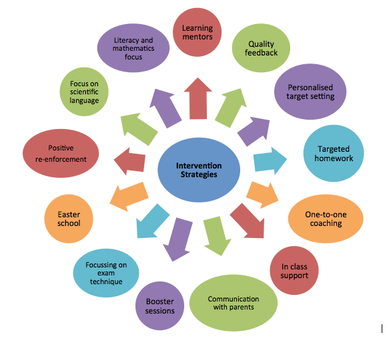 Characteristics of Effective Intervention Struggling Students Benefit from Classroom Intervention Strategies that…. 1. Include explicit, well-organized (systematic) instruction as well as opportunities to consolidate information; 2. Are provided in small-group or one-on-one formats; 3. Small timeframe provision on a regular basis 4. Provide extended opportunities for practice, including guided, independent, and cumulative practice with teacher feedback; 5. Are provided in addition to regular classroom practice; 6. Include continuous progress monitoring. 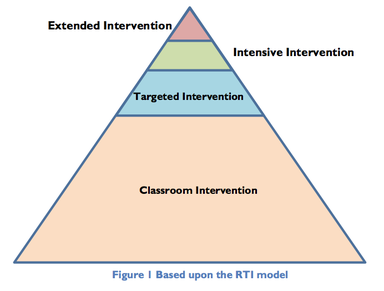 Tier I – Classroom Interventions are designed for All Students, and they should reach approximately 80% of students Tier 2 – Strategic Interventions should help Some Students, an additional 15% of students. Tier 3 – Intensive Interventions should target A Minority of Students, 5% of students Tier 4 – Extended Intervention will apply to a Few Students, approximately 2% Intervention Strategies:
Oral Feedback A suggested sequence for giving individual oral feedback in a planned review as intervention
Written Feedback: In order to improve the quality of feedback there must be explicit expectations about it. Teachers need to explain to pupils that, in line with whole-school policy:
Target setting: The purposes of target setting:
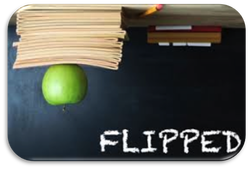 The current model of teaching where students sit in rows facing a teacher who stands in front of white board dates back to the 19th century and the time of William Edward Forster. The teacher will spend a proportion of the lesson disseminating knowledge such as key terminology to the students, while they passively copy this down form the board. At the end of the lesson students are given their homework which usually consists of answering questions based upon principles covered in the lesson. The students may have not understood some of the concepts leaving them to go home and struggle to complete the homework assignments, unable to ask questions or work collaboratively with others. The results of which is demotivated and passive learners. Classroom practitioners and educational innovators are developing ways to personalise learning using new technologies and strategies that are tailored to the needs and the learning habits of the students. 21st century education must prepare students for their future in a rapidly changing world in careers that may not exist yet. The current education model cannot address these needs.
When I first read about flipped learning I felt inspired by a teaching method that could lead to more independent learning, collaboration work and give students more control of their education. There is no single model for flipped learning and is widely used to describe almost any class structure that provides pre-distributed lesson content followed by in-class exercises. The lesson is focused around applying concepts, giving feedback and puts more of the responsibility for learning on the shoulders of students placing them in the centre of learning process while giving them greater impetus to experiment and question. The flipped classroom is not just about watching videos before a lesson, yes videos are a useful tool, but they are not the only medium that can be used. First StepsWhen I started experimenting with a flipped classroom I began with giving the students access to my lesson PowerPoint presentation, summary notes which contained all the definitions of the key terminology and information about the topic along with learning outcomes and success criteria. The rationale for this was to gradually build up a routine in which the students prepared for each lesson at home, and the dissemination of knowledge such as key words would be eliminated from the lesson. I would ask each student to summarise in no more than 150 words the "pre-homework" and the lesson starter was used to check understanding through questioning from, and of the students. The students would then be arranged into differentiated groups, based upon their preferred learning style and their knowledge and understanding of the topic. These groups would change from lesson to lesson depending on how well the students mastered the principles and the type of activity they wanted to carry out to demonstrate their progress and attainment. In the majority of instances the students would choose which group they wanted to be part of (five in total) and effective teams collaboration groups soon built up. Placing students in small groups was, and is highly beneficial as the students in the groups as they usually share the same misconceptions and difficulties which can be addressed collectively, and they felt more confident in asking questions in smaller groups with students of the same ability. With time I began to develop and record my own videos in addition to using videos from You Tube. There are some very good clips which cover the general topic but I needed videos to be more specific to my lessons and the learning objectives so began to create my own. Initially these were very basic just my voice and freeware annotation software to draw diagrams. The key is for the videos to be short and precise, I found videos longer than 7 minutes the students seemed to loose interest. The tools needed to create your own videos are: 1. Annotation software such as Smoothdraw 4, Google Drawing (both of which are free) or ActivInspire which is the interactive white board software. 2. Screen capture software to film your computer screen. I use Camtasia which also allows you to edit the videos you make but has a one off payment. Free software such as Screencast-O-Matic, Jing, and Explain Everything, Show Me and Educreation for the iPad are equally as good and free. Expain Everything and Educreation have the ability to record your voice as you speak and import pictures to annotate. 3. A webcam is always useful to film yourself whilst recording the videos to personalise your productions and maintain the teacher-student connection 4. A microphone if you don't have one inbuilt with your webcam. These are now relatively inexpensive and connect via USB 5. A shared area such as the schools VLE or a Cloud storage drive such as GoogleDrive, Box, Dropbox or Copy for the students to access all the videos, Powerpoint, worksheets etc. All of these are free and vary in the amount of storage they offer.
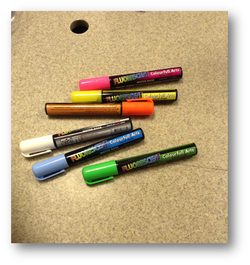 Used as a creative task for students to demonstrate knowledge and understanding in a fun way. The pen can be picked up from most stationary stores or internet auction sites and come in a variety of fluorescent colours. Students really enjoy writing on the windows and the activity can be used to summarise a topic, a plenary exercise, used for small group teaching as an additional white board, and an opportunity for students to enhance literacy. 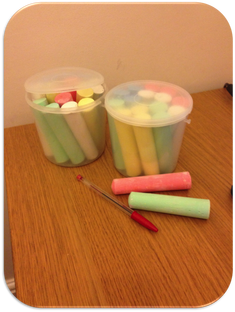 Giant chalk puts the fun into mind mapping, drawing annotated diagrams such as cells in science and allows students to display their creativity. A tub of 15 pieces can be picked for about £1.00 form discount stores. Give the students a selection of 5 different colours of chalk and an area outside on the concrete. In small groups they have to produce a piece of art work to demonstrate their understanding of a particular concept or topic. 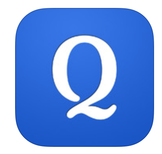 Quizlet. From a learning point of view this is one of the best app I've come across in a long, long time. It's comparable for all types of mobile devices and accessible as a desktop version. The app is fantastic at engaging students into learning key terminology and enhancing their literacy skills. Simply type in a term and the corresponding definition, which is the saved under a topic title of your choice. By pressing on either term or definition Quizlet will speak the phrase back to you in a human manner. This enables students to hear the correct pronunciation for complex terminology. There are different activities that can then be undertaken from flashcards, to speller where students spell the key word from either reading the definition or hearing it being said.
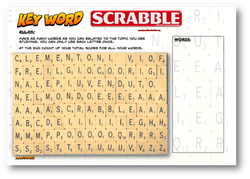 Key Words Scrabble - revision or equally a starter or plenary activity. Students have to make as many words as they can from the Scrabble letters given using each letter only once. I have printed these sheets onto A3 paper and have them laminated so the students can cross off the letters they have used. The activity is good as enhancing both literacy and mathematical skills. The activity can be completed in small groups or individually and a time limit can be given for added pressure!
|
Paul McCormack BSc(Hons), MRSC, FCollT, PGCE
AuthorPaul is Head of Science in a secondary school in the South West of England, and a Fellow of the College of Teachers, with an interest in developing new and innovative learning and teaching strategies to enable students to achieve their potential. Archives
April 2017
Categories
All
|
||||||||||||||
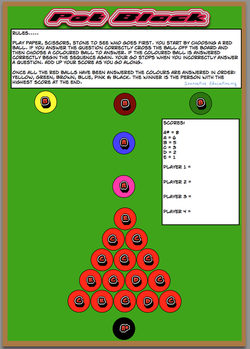
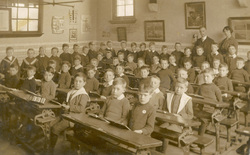
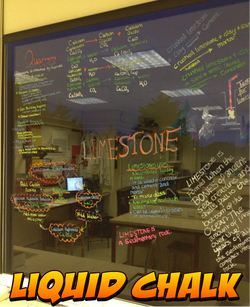
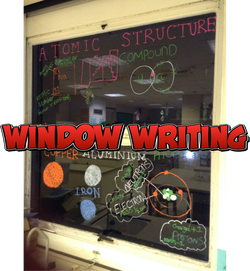

 RSS Feed
RSS Feed
